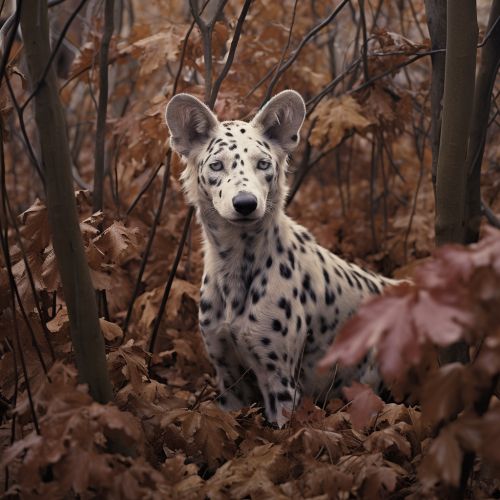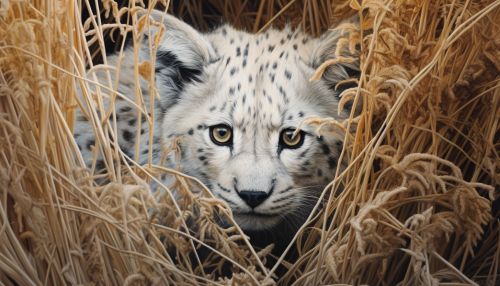The Science of Animal Camouflage and Adaptive Coloration
Introduction
The science of animal camouflage and adaptive coloration is a complex and fascinating field of study within the broader discipline of biology. It involves the study of how animals have evolved to blend in with their environments, avoid predators, and even deceive their prey. This article delves into the intricacies of this subject, exploring the various types of camouflage and adaptive coloration, the mechanisms behind these phenomena, and their significance in the animal kingdom.
Types of Camouflage
There are several types of camouflage that animals employ to survive in their respective environments. These include cryptic coloration, disruptive coloration, countershading, and mimicry.
Cryptic Coloration


Cryptic coloration, also known as concealing coloration, is the most common form of camouflage. It involves an animal's coloration matching the color and pattern of its environment, making it difficult for predators or prey to visually detect it. This is seen in a wide range of species, from insects like the stick insect to larger animals like the snow leopard.
Disruptive Coloration
Disruptive coloration is a type of camouflage that works by breaking up the animal's outline with patches of contrasting color. This makes it difficult for predators to recognize the animal's shape. Examples of animals that use disruptive coloration include the zebra and the dazzle-patterned cuttlefish.
Countershading
Countershading involves an animal having a darker color on the top of its body and a lighter color on the underside. This gradient of color helps to counteract the effect of sunlight, making the animal appear flat and less three-dimensional to observers. Many marine animals, such as sharks, and terrestrial animals like the deer, employ countershading.
Mimicry
Mimicry is a form of camouflage where an animal not only blends in with its environment but also imitates the appearance of another object or organism. This can be a form of defensive mimicry, where a harmless species mimics a harmful one to deter predators, or aggressive mimicry, where a predator or parasite mimics a harmless species to deceive its prey or host. The mimic octopus and the viceroy butterfly are examples of animals that use mimicry.
Mechanisms of Camouflage
The mechanisms behind animal camouflage and adaptive coloration are diverse and complex, involving both genetic and environmental factors.
Genetic Factors
The genetic basis of camouflage involves the inheritance of genes that determine an animal's coloration and pattern. These genes can be influenced by natural selection, with individuals that have more effective camouflage being more likely to survive and reproduce, passing on their advantageous genes to their offspring.
Environmental Factors
Environmental factors also play a crucial role in animal camouflage. For example, the color and pattern of an animal's environment can influence its coloration through a process known as phenotypic plasticity, where the phenotype of an organism can change in response to its environment. This is seen in species like the chameleon, which can change its color to match its surroundings.
Significance of Camouflage
Camouflage plays a vital role in the survival and success of many animal species. It helps prey avoid predation, allows predators to sneak up on their prey, and can even facilitate communication between animals.
Predator Avoidance
For prey species, effective camouflage can mean the difference between life and death. By blending in with their environment, these animals can avoid detection by predators, increasing their chances of survival.
Hunting and Predation
For predators, camouflage can be a valuable tool for hunting. By blending in with their environment, these animals can approach their prey undetected, increasing their chances of a successful hunt.
Communication
In some cases, camouflage can also play a role in communication between animals. For example, some species use color change as a form of signal to communicate with each other, such as the cuttlefish, which can change its coloration to signal aggression or mating intent.
